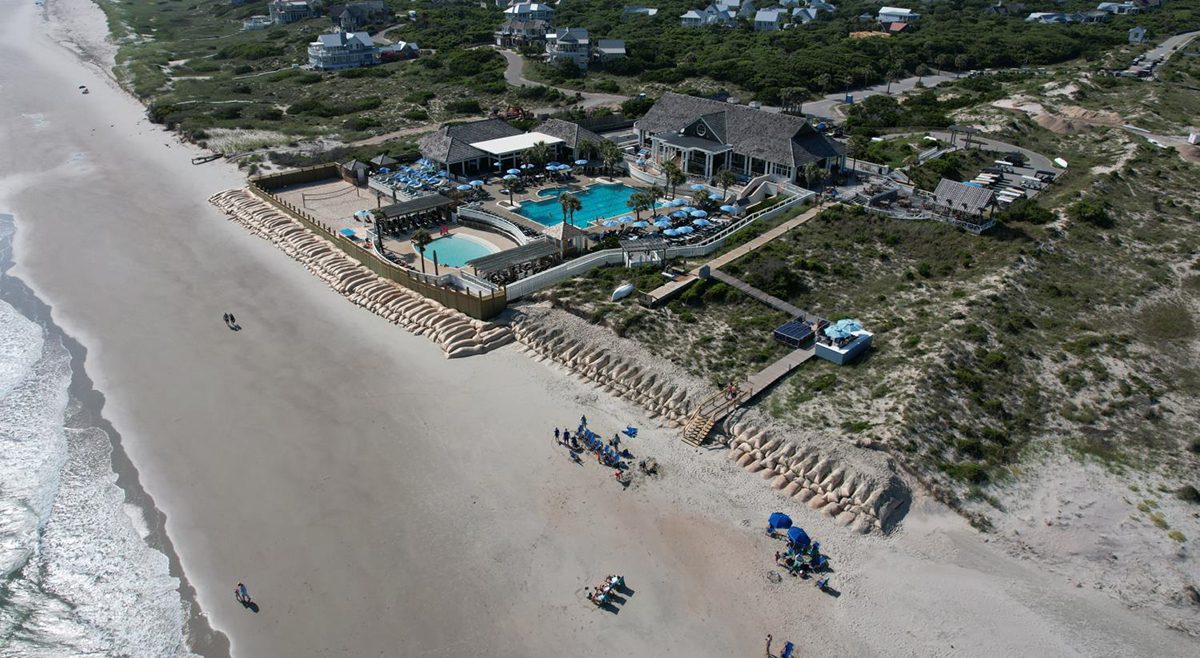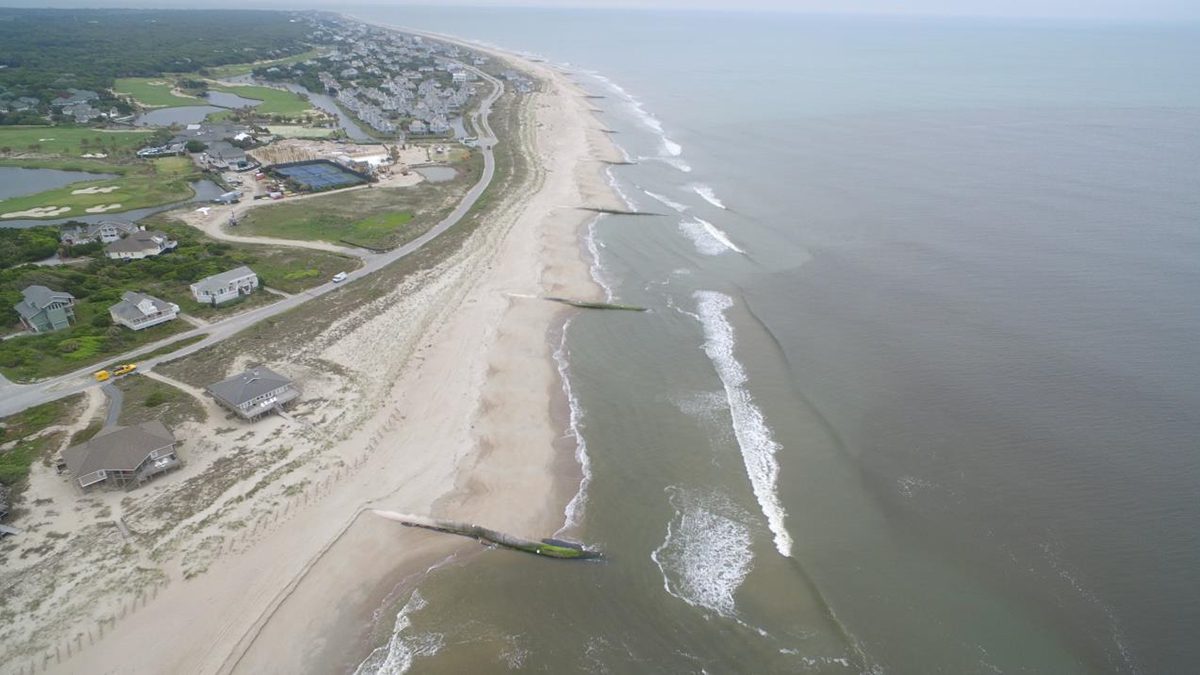
Storms largely drive sand movement along the Bald Head Island beachfront and sand is being lapped away at the east end, where village officials are considering building a terminal groin to keep erosion at bay.
The unpredictability in the frequency and strength of those storms were among several points of concern raised by the Bald Head Island Conservancy last week over the prospect of additional hardened erosion control structures on the Brunswick County island’s shores.
Supporter Spotlight
“So, we’re going to try and control something, which we don’t even know how to predict the future of, and we’re going to try and put something there that says we know what it’s going to do?” Chris Shank, executive director of the Bald Head Island Conservancy, recently asked the village council. “It’s not an easy system to understand. To think, if we put something in the way, can you block sand in that area for a little while? You probably can for a little while. How long will it last? We don’t know that.”
Shank was invited to make a presentation to the village council during its meeting Friday, wrapping up a week when legislation was introduced that would allow the village the option to add a second terminal groin to its shoreline and replace a series of fabric sand tubes with a field of rock structures.
Related: Bald Head Island seeks to change hardened shorelines law
The proposed revision to a statute that lays out the rules for the construction, funding and number of terminal groins permitted on the North Carolina coast bumps the total of allowable hardened erosion control structures from six to seven.
Language added to the law went last week before the Senate judiciary committee, which is expected to take it up for further discussion this week. That language defines a terminal groin as one or more structures constructed at the terminus of an island or on the side of an inlet, or where the ocean shoreline converges with Frying Pan Shoals.
Supporter Spotlight
This would give the village the option of building what it describes as a field of rock structures that would replace fabric sand tubes installed along the west end of south beach and a terminal groin at the east end of south beach. The sand tubes have to be replaced every few years.

A state-permitted sandbag revetment installed by a private country club known as The Shoals Club protects it from the encroaching ocean at the east end of the south-facing beach.
Shank played a video of a female sea turtle lumbering under the cover of night along the beach to the sandbag wall. With no place to dig a nest, she eventually turned around and headed back to sea, he said.
“We don’t want something like that to be a long-term measure, especially not in this area,” Shank said, adding that the sandbags are analogy for how rock structures might affect nesting sea turtles.
“We’re sharing the island with our wildlife and, look, I’m not unrealistic about the fact that we have massive erosion in that area. I get that. But we have to be smart about the future.”
Bald Head Island’s beach is federally designated critical sea turtle habitat.
The soft tube groin field rests on the opposite end of the south beach from the 1,300-foot-long terminal groin the village had constructed nearly 10 years ago. The groin, a wall-like structure built perpendicular to the ocean shoreline, is designed to stop the movement of sand.
Bald Head Island was the first to build a terminal groin after the North Carolina General Assembly repealed a 30-year ban on such hardened erosion control structures on the state’s ocean shores.
Bald Head Island Mayor Peter Quinn made clear last week that village officials have not determined whether they want to go the route of having additional hardened structures on the island’s beachfront.
“It needs to be studied before anything is acted on, and this is a step toward making sure that it’s even a possibility before we do anything,” he said. “We’re working with the conservancy. This isn’t something we’re trying to steamroll or anything.”
Shank cautioned council members that, should they decide against building groins at the east end of south beach and the bill amendment passes in Raleigh, the door is opened for a future council to do so.
“I know that there’s a process involved, but it’s complicated,” he said. “By having this legislation passed you have created a pathway for somebody else to walk through and that is a major concern,” he said. “Once that pathway’s open, then what?”
The conservancy is a nonprofit organization that sponsors and facilitates coastal scientific research and offers recreational and educational activities to the public.
Shortly after Shank’s presentation, village council members approved a contract with Marinex Construction of North Carolina Inc. to place more than 1 million cubic yards of sand onto shore at the terminal groin fillet and the east end of south beach. That project is expected to begin later this year.
The village is sending out another round of bids for a project to replace the soft groin tubes on the east end.







